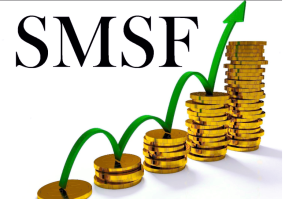How much deposit is required for SMSF property?
Investing in property through a Self-Managed Superannuation Fund (SMSF) can be a lucrative option for those looking to grow their retirement savings. However, before diving into the world of SMSF property investment, it’s crucial to understand the deposit requirements involved. In this comprehensive guide, we’ll explore the factors that influence the deposit amount and provide insights into making informed decisions for your SMSF property investment.
The Role of Deposit in SMSF Property Investment
When considering SMSF property investment, the deposit plays a significant role in determining the feasibility of the investment. Generally, the deposit for an SMSF property is required to be a minimum of 20% of the property’s purchase price. This requirement ensures that the fund has sufficient equity to secure the property and comply with regulatory guidelines.

Factors Influencing the Deposit Amount
Several factors influence the deposit amount required for SMSF property investment:
- Property Value: The purchase price of the property directly impacts the deposit amount. A higher-valued property will naturally require a larger deposit.
- Lender Requirements: Different lenders may have varying deposit requirements for SMSF property loans. It’s essential to shop around and compare lenders to find the most favorable terms for your SMSF.
- Loan-to-Value Ratio (LVR): The LVR is the ratio of the loan amount to the property’s value. A lower LVR indicates a higher deposit requirement. Lenders typically prefer lower LVRs to mitigate risks.
- Market Conditions: Economic and market conditions can impact deposit requirements. During periods of economic uncertainty, lenders may be more conservative, necessitating a higher deposit.
Strategies to Secure an SMSF Property with Minimum Deposit
While a 20% deposit is the general requirement, there are strategies to secure an SMSF property with a minimum deposit:
Property Selection
Choosing a property with strong growth potential can enhance the overall performance of your SMSF investment. Conduct thorough research on property markets, location trends, and potential for capital appreciation.
Negotiation Skills
Effective negotiation skills can lead to a lower purchase price, reducing the required deposit amount. Work with experienced real estate agents and explore opportunities to secure the property at a favorable price.
Financial Planning
Engage with financial advisors and mortgage brokers who specialize in SMSF property investment. They can help structure your finances in a way that minimizes the required deposit while ensuring compliance with regulations.

Conclusion
Investing in property through an SMSF can be a rewarding strategy for building wealth in preparation for retirement. Understanding the deposit requirements and implementing strategic approaches to minimize the upfront costs are essential steps in optimizing your SMSF property investment. Always seek professional advice and stay informed about market trends to make informed decisions that align with your financial goals.
By delving into the intricacies of SMSF property deposits, investors can navigate the complexities of this investment strategy and make well-informed decisions that contribute to the long-term success of their retirement fund.
Remember, the key to a successful SMSF property investment lies in careful planning, thorough research, and staying informed about regulatory changes and market conditions. https://smsfauditshop.com.au/affordable-online-smsf-auditing/


